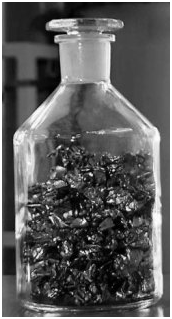Recycling plan of the electric vehicles batteries.
According to reports, in the United States, 99% of lead-acid car batteries are recyclable and one of the highest recovery products. Although the battery can be replaced after the battery is exhausted, the old battery can be pulverized or melted, and its raw materials can be reused.
Why people care about recycling? The first is cost: Because electric vehicle batteries are complex and require rare metals such as cobalt and manganese, they are one of the most expensive parts of such vehicles. As electric vehicles become more prevalent, recycling such metals from waste batteries is much cheaper than mining such metals from the earth.
More importantly, you can reduce your carbon footprint. To address these challenges, Volkswagen is using two methods of recycling batteries, one is the introduction of portable charging piles, an energy-saving recycling.
As the number of electric vehicles continues to increase, the number of batteries is also increasing, and people have begun to worry about how such lithium-ion batteries will be recycled after 10 to 15 years of use. Volkswagen plans to produce one million electric cars a year by 2025 and has begun to study how to reuse batteries in such electric vehicles.
Old lithium-ion batteries that have been powered by cars for 10 years or more may no longer be suitable for powering cars, but they still have considerable energy capacity (the energy that can be stored in the battery pack of the 2019 Volkswagen e-Golf model) It is equivalent to the energy used by American families for a day or even longer.). Electric cars need to be recharged in many places, and there may be no charging piles in such places, or even no charging stations.
These two problems can be solved with just one solution. The Volkswagen Group plans to produce a portable fast-charging pile that can store 360 kWh of energy and can charge up to four cars at a time, with a maximum fast-charge output of 100 kW. Like the portable phone charger, the Volkswagen Group's charging pile can be used until the power is exhausted or if it needs to be connected to the power supply to charge itself. In addition, the charging pile is small in size and can be deployed in places where it is difficult to charge.
The battery pack used in the charging pile is the same as that used in the electric vehicle produced by the Volkswagen MEB platform, so that when the battery life of the electric vehicle reaches the limit, it can also be used as a battery for the charging pile. The Volkswagen Group's first portable fast-charging pile is expected to be installed in Germany next year, and the Volkswagen Group expects to begin full production of the charging pile in 2020.
Volkswagen will use a special broken battery machine, individual battery components will be ground, liquid electrolyte will be removed, and such battery components will be broken down into "black powder", which contains valuable cobalt, lithium, manganese and nickel. Raw materials, such materials need to be further physically separated before they can be reused in new batteries.

Partially recycled battery material
Volkswagen's long-term goal is to recycle about 97% of the battery pack raw materials in scrapped electric vehicles (EVs). Now, the recovery rate of Volkswagen battery raw materials is 53%. The Salzgitter plant is expected to increase the recycling rate of Volkswagen's battery raw materials to 72%. Volkswagen expects more battery recycling plants in the Salzgitter plant in the next few years. Considering the sales volume of the Volkswagen Group's electric vehicle plan, Volkswagen will give priority to handling battery recycling within the company for cost and environmental considerations, although it is still at least 10 years before the battery pulverizer processes the battery in large quantities.
This article is from Allicdata Electronics Limited.

